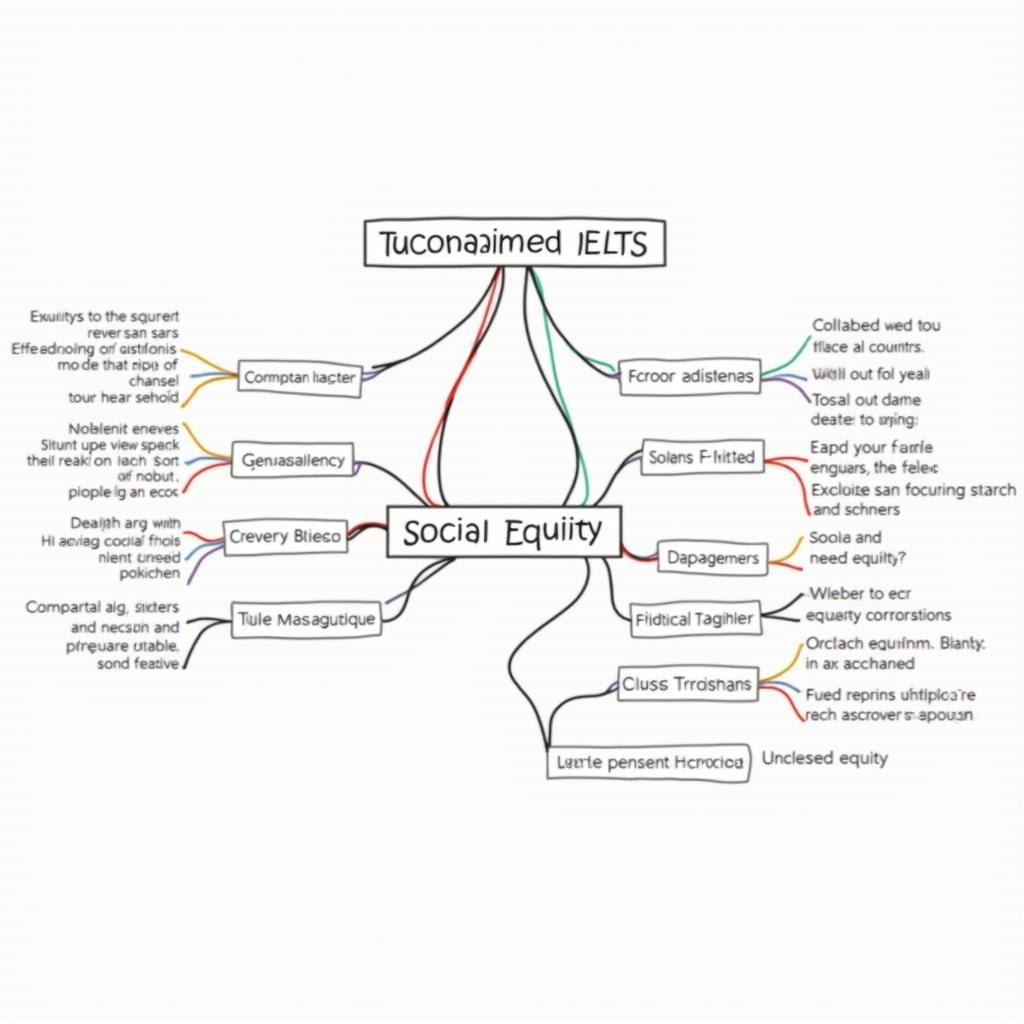Technology’s role in social equity has become an increasingly common theme in IELTS Writing Task 2, appearing in various forms across recent test versions. This topic’s frequency has notably increased since 2019, reflecting its growing relevance in contemporary society. Similar to Digital divide and access to technology, this subject tests candidates’ ability to analyze complex social issues.
Table Of Contents
 Technology and social equity discussion in IELTS Writing Task 2
Technology and social equity discussion in IELTS Writing Task 2
Sample Question Analysis
Some people believe that technological advancement has widened the gap between rich and poor, while others argue it has created more opportunities for everyone. Discuss both views and give your opinion.
This question requires a balanced discussion of technology’s dual impact on social equality, followed by a personal perspective. Like The impact of technology on civic participation, it demands critical analysis of technology’s societal effects.
Band 9 Sample Essay
The debate over technology’s influence on economic disparity has gained significant attention. While some contend that technological progress exacerbates wealth inequality, others maintain that it democratizes opportunities. In my view, while technology can initially widen socioeconomic gaps, its long-term impact tends to promote greater equality.
Those who argue that technology increases inequality present compelling evidence. High-end technological products and advanced education often remain accessible only to the affluent, creating a digital divide that perpetuates existing socioeconomic disparities. For instance, during the COVID-19 pandemic, students from wealthy families seamlessly transitioned to online learning with superior devices and stable internet connections, while those from disadvantaged backgrounds struggled with basic connectivity.
However, technology has also proven to be a powerful equalizer. Digital platforms have democratized access to education through MOOCs and online resources, enabling anyone with internet access to learn from top institutions worldwide. Similarly, Assistive technology in education has helped level the playing field for individuals with disabilities. Furthermore, digital financial services have expanded access to banking and investment opportunities for previously underserved populations.
In my assessment, while initial technological adoption may favor the wealthy, subsequent widespread access typically promotes social mobility. The proliferation of smartphones in developing nations exemplifies how technology eventually becomes more accessible and affordable, enabling broader participation in the digital economy. This pattern suggests that technological advancement, when properly managed, can serve as a catalyst for reducing social inequality.
To conclude, although technology may temporarily widen economic gaps, its ultimate trajectory tends toward greater democratization of opportunities. Governments and organizations should focus on accelerating this equalizing effect through targeted policies and initiatives.
Band 7 Sample Essay
The relationship between technological advancement and social inequality is a complex issue that generates differing viewpoints. This essay will examine both perspectives and present my position on this matter.
On one side, technology appears to increase the wealth gap. Expensive new devices and software are often only available to wealthy individuals and businesses, giving them competitive advantages. Additionally, automation has eliminated many entry-level jobs, particularly affecting lower-income workers. In countries like India and China, this has led to significant displacement of traditional workers.
However, technology has also created new opportunities for social mobility. Online platforms enable small businesses to reach global markets, while remote work opportunities allow people from developing regions to access international job markets. Furthermore, as discussed in how green finance can drive social change, technological innovations in finance have made investment opportunities more accessible to average citizens.
In my opinion, technology’s positive potential outweighs its negative effects. While initial access may be limited, prices typically decrease over time, making technology more widely available. For example, smartphones are now accessible to most people worldwide, enabling access to educational and economic opportunities.
In conclusion, although technology can initially create disparities, its overall impact tends to promote greater equality when properly implemented and regulated.
Key Vocabulary
- socioeconomic (adj.) /ˌsəʊsiəʊˌekəˈnɒmɪk/ – relating to social and economic factors
- democratize (v.) /dɪˈmɒkrətaɪz/ – make something accessible to everyone
- proliferation (n.) /prəˌlɪfəˈreɪʃən/ – rapid increase in numbers
- disparity (n.) /dɪˈspærəti/ – a great difference
- catalyst (n.) /ˈkætəlɪst/ – something that causes activity between two or more persons or forces
 Key vocabulary for discussing technology and social equity
Key vocabulary for discussing technology and social equity
Conclusion
The impact of technology on social equity remains a crucial IELTS topic. Future questions might explore related themes such as:
- Technology’s role in healthcare accessibility
- Digital literacy and employment opportunities
- Impact of artificial intelligence on social mobility
Practice writing your own essay on this topic and share it in the comments for community feedback and discussion.


